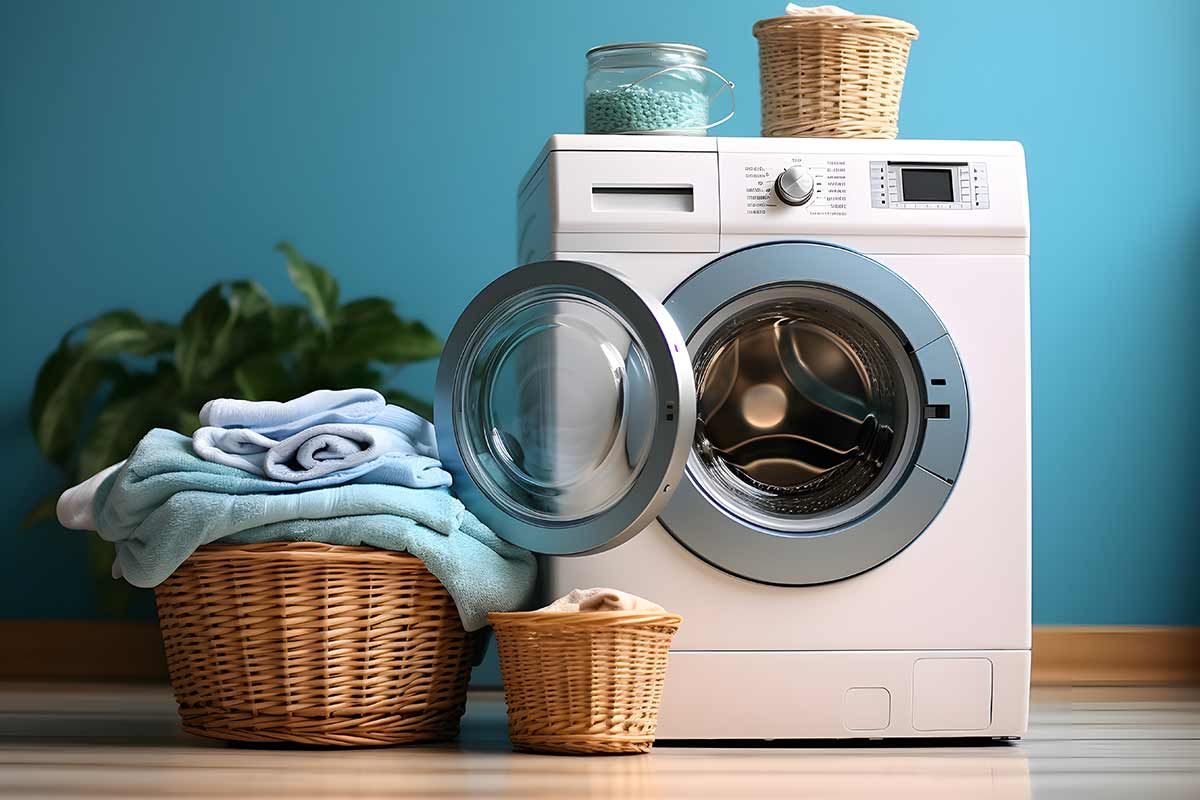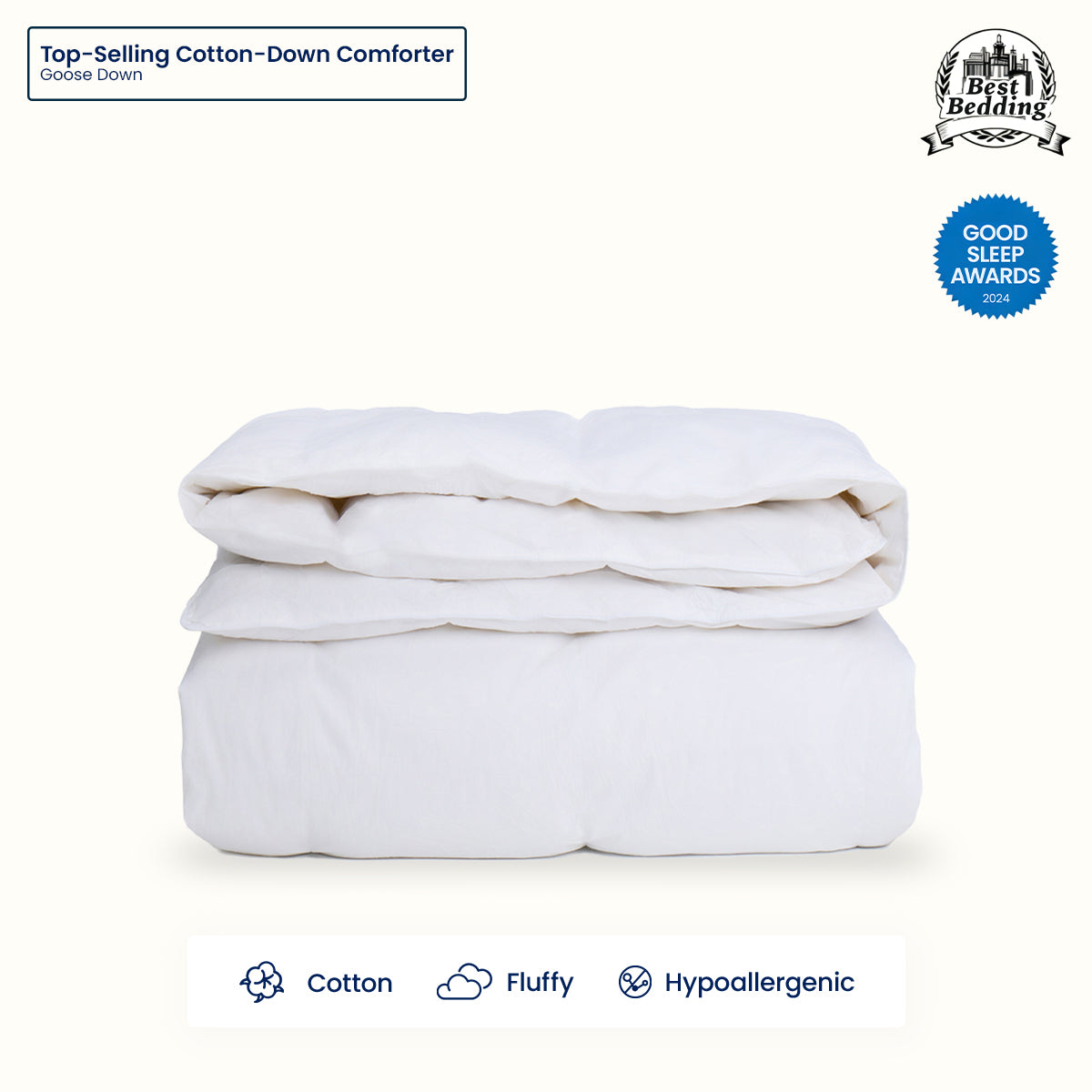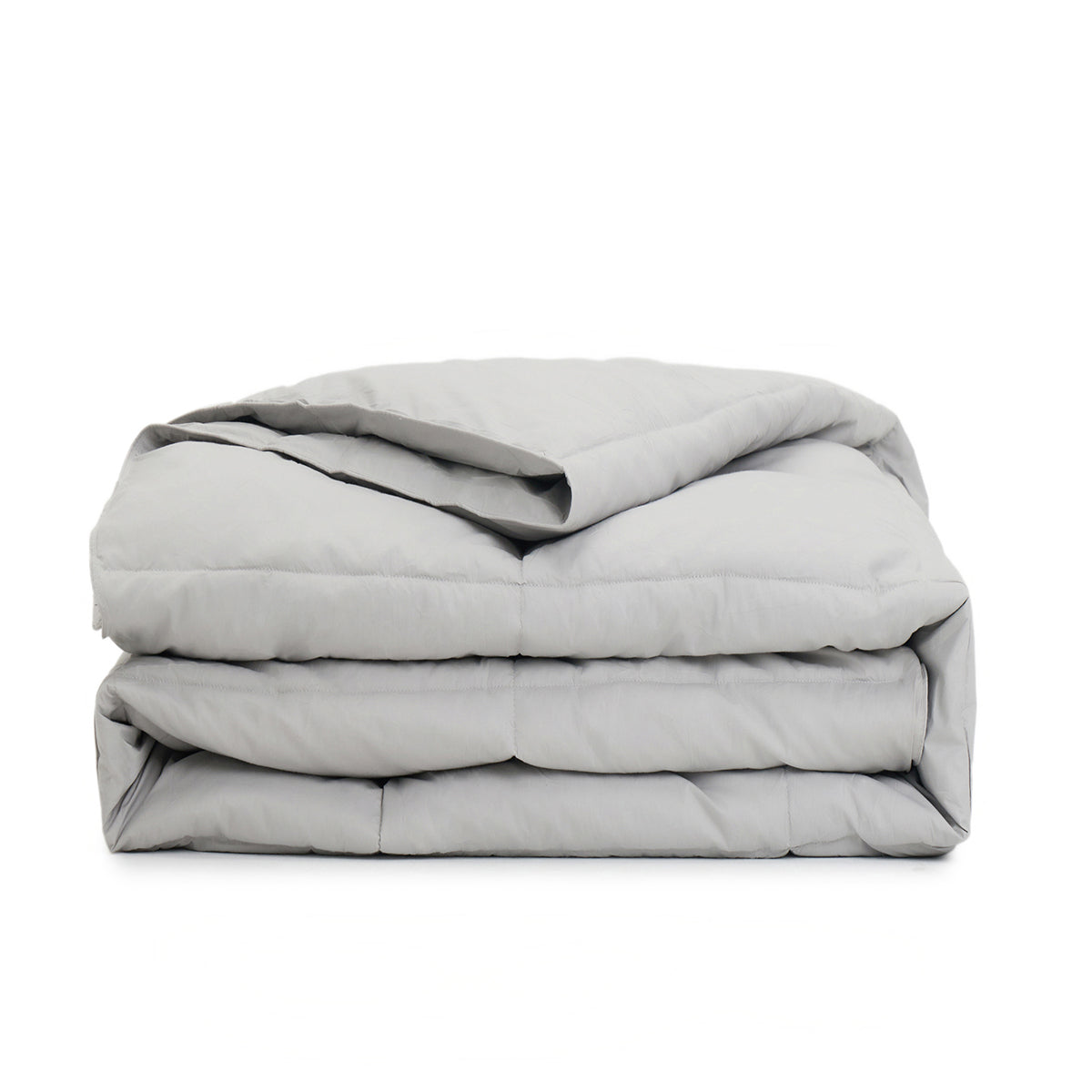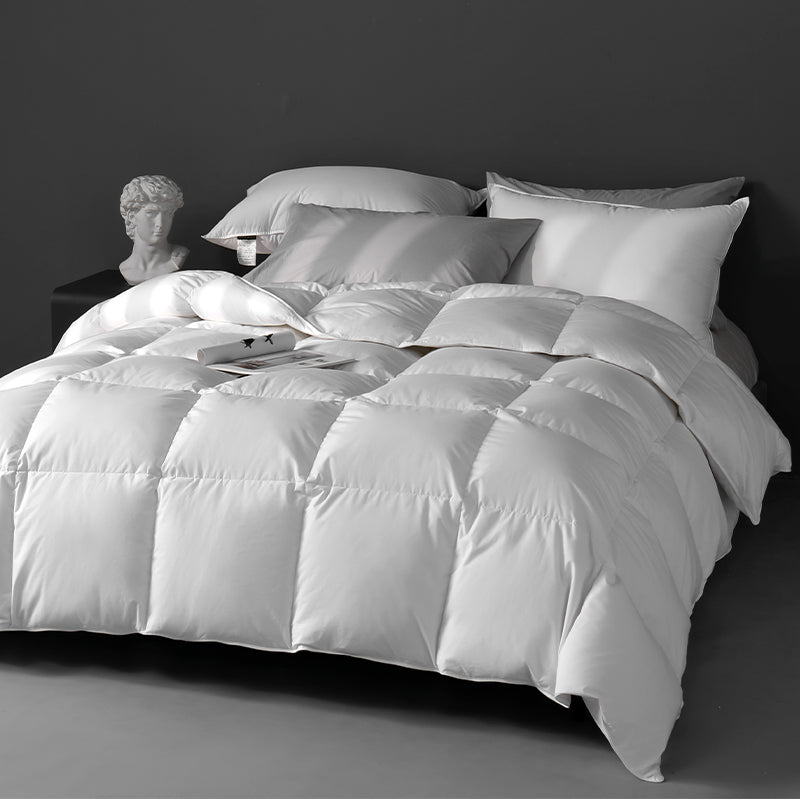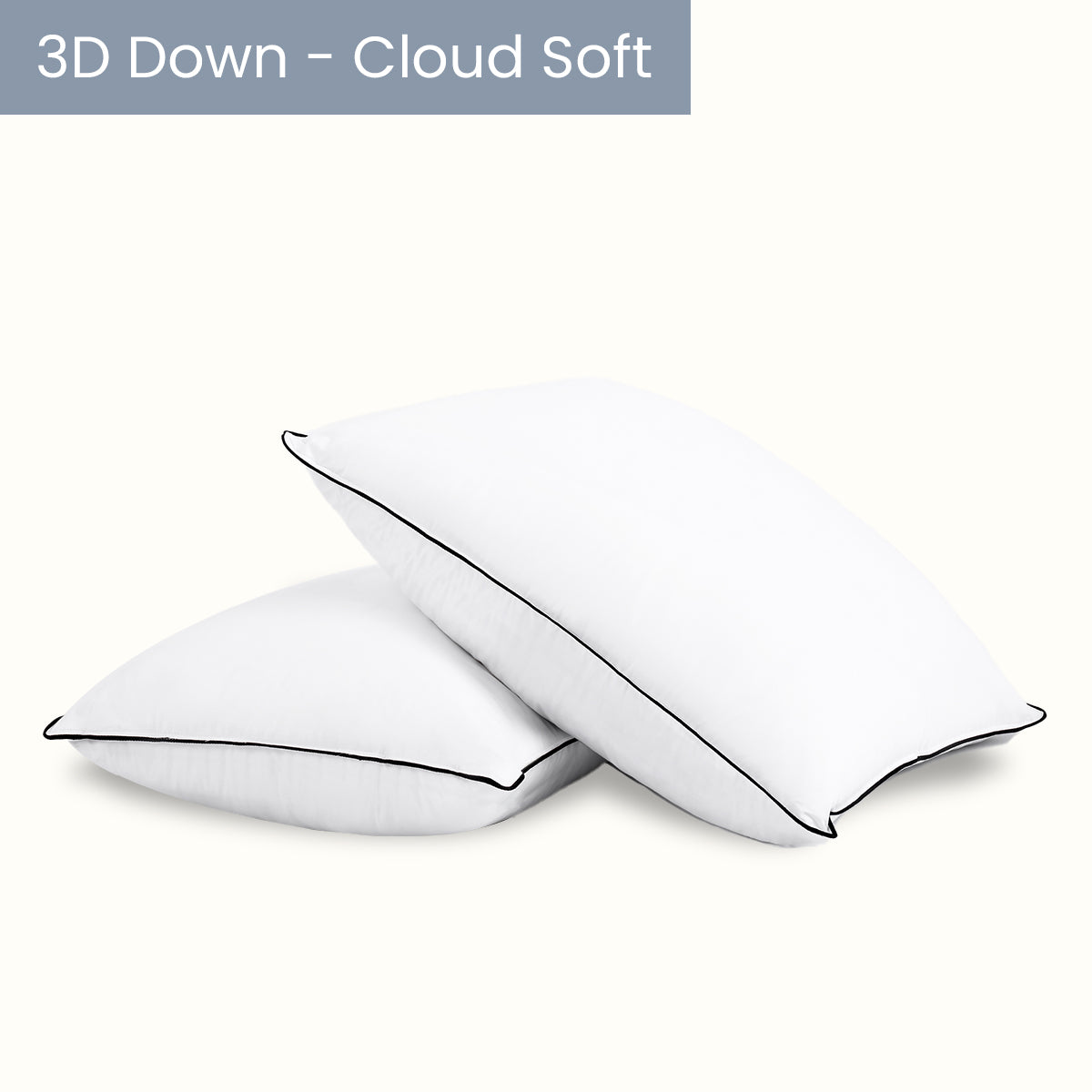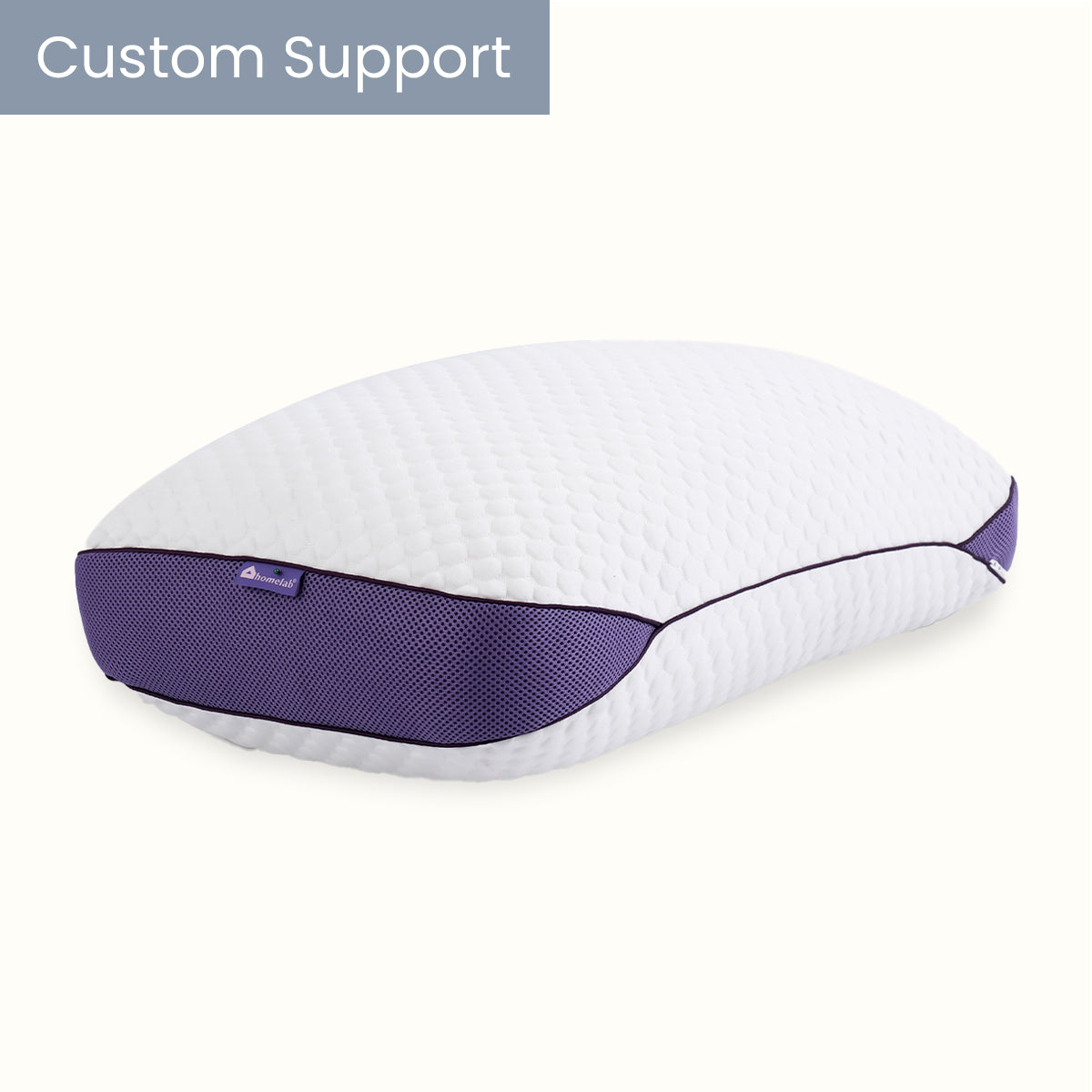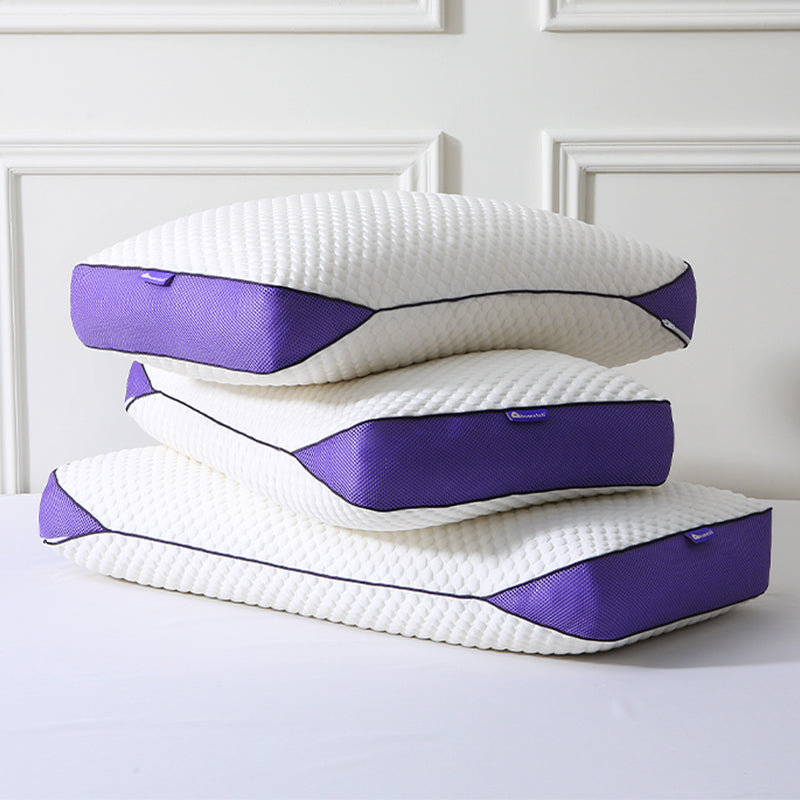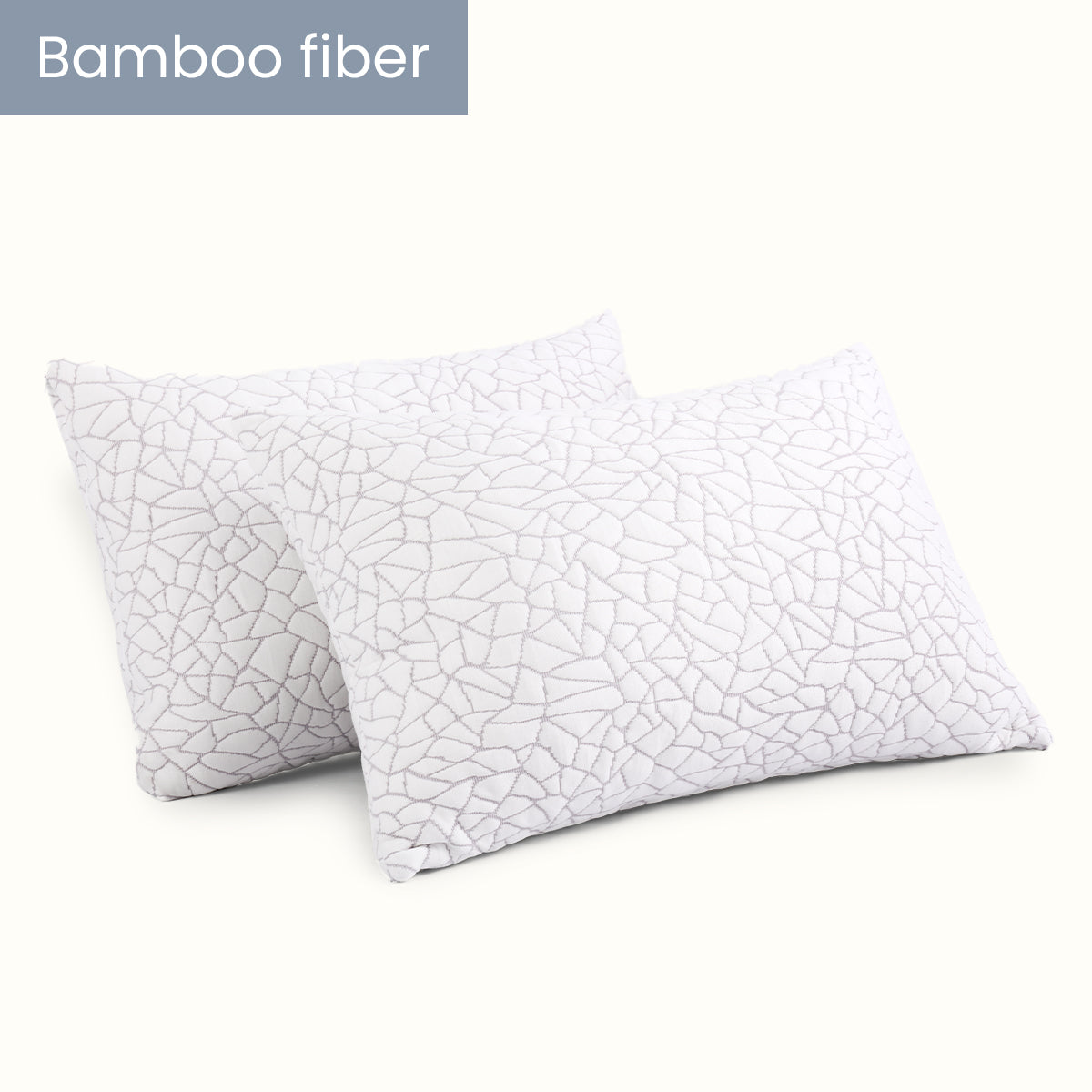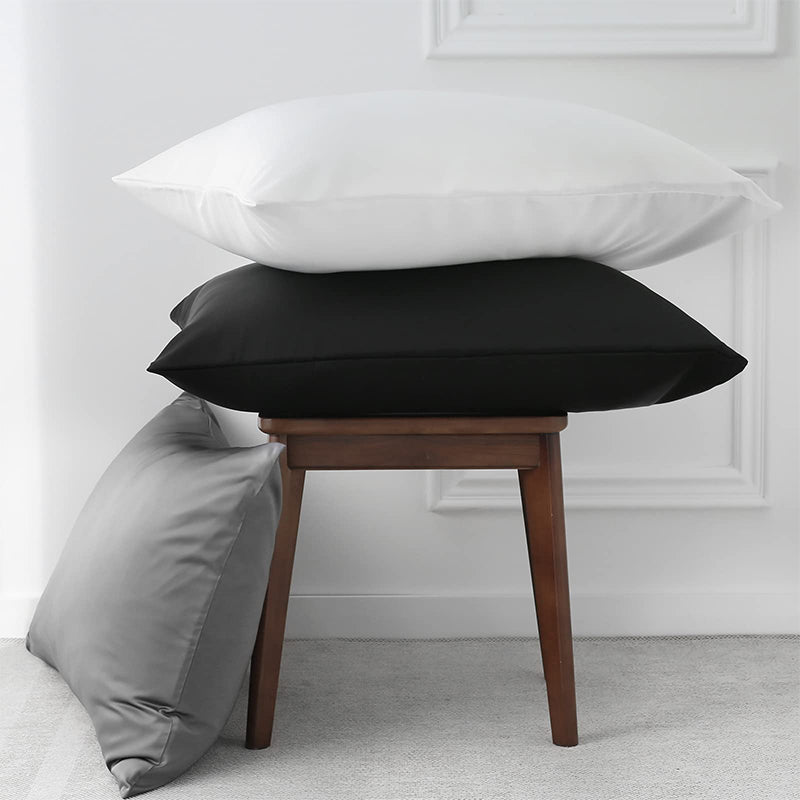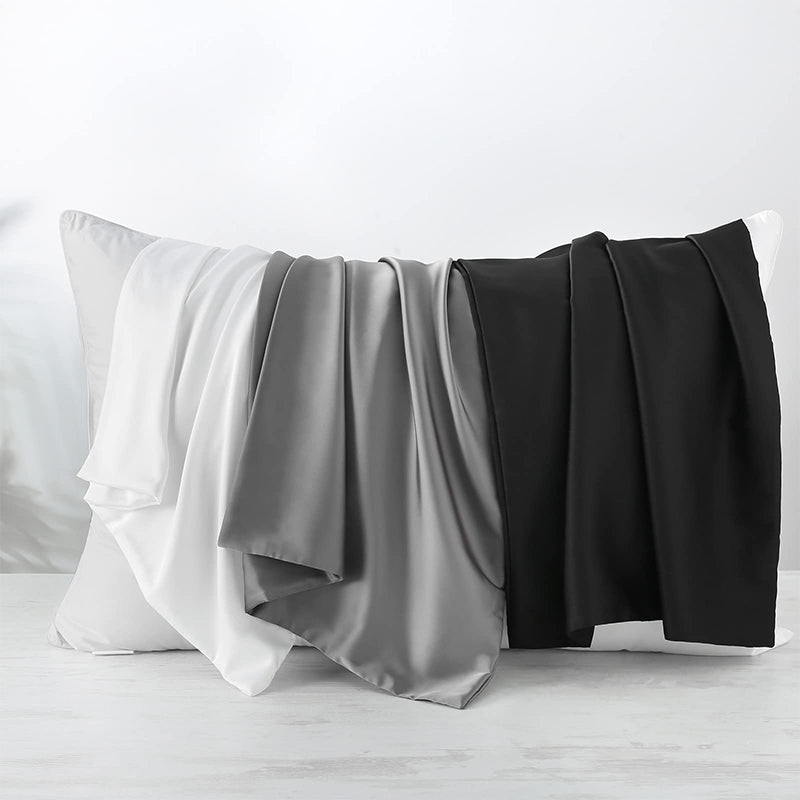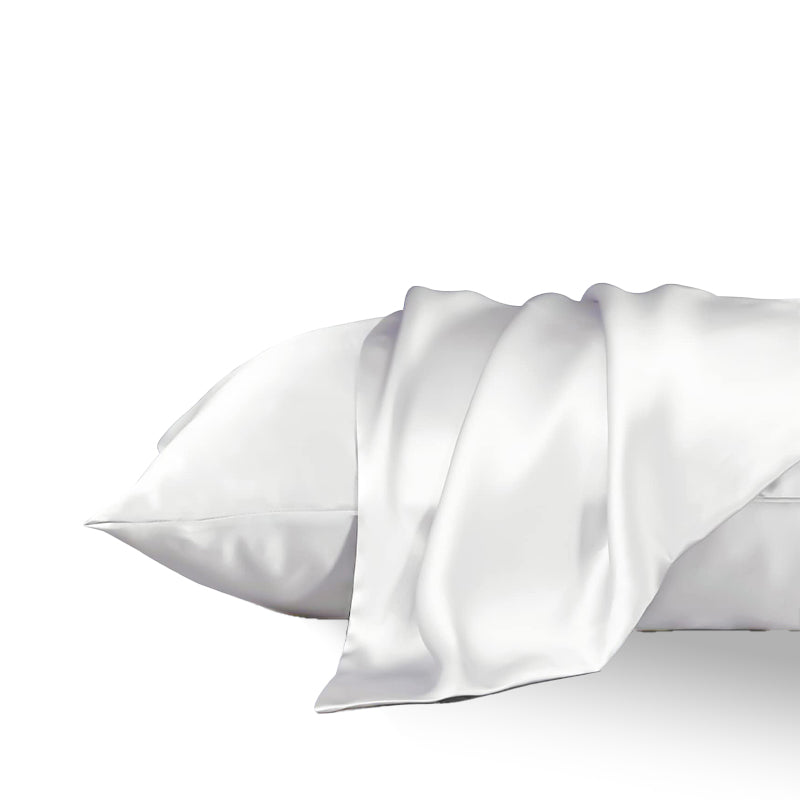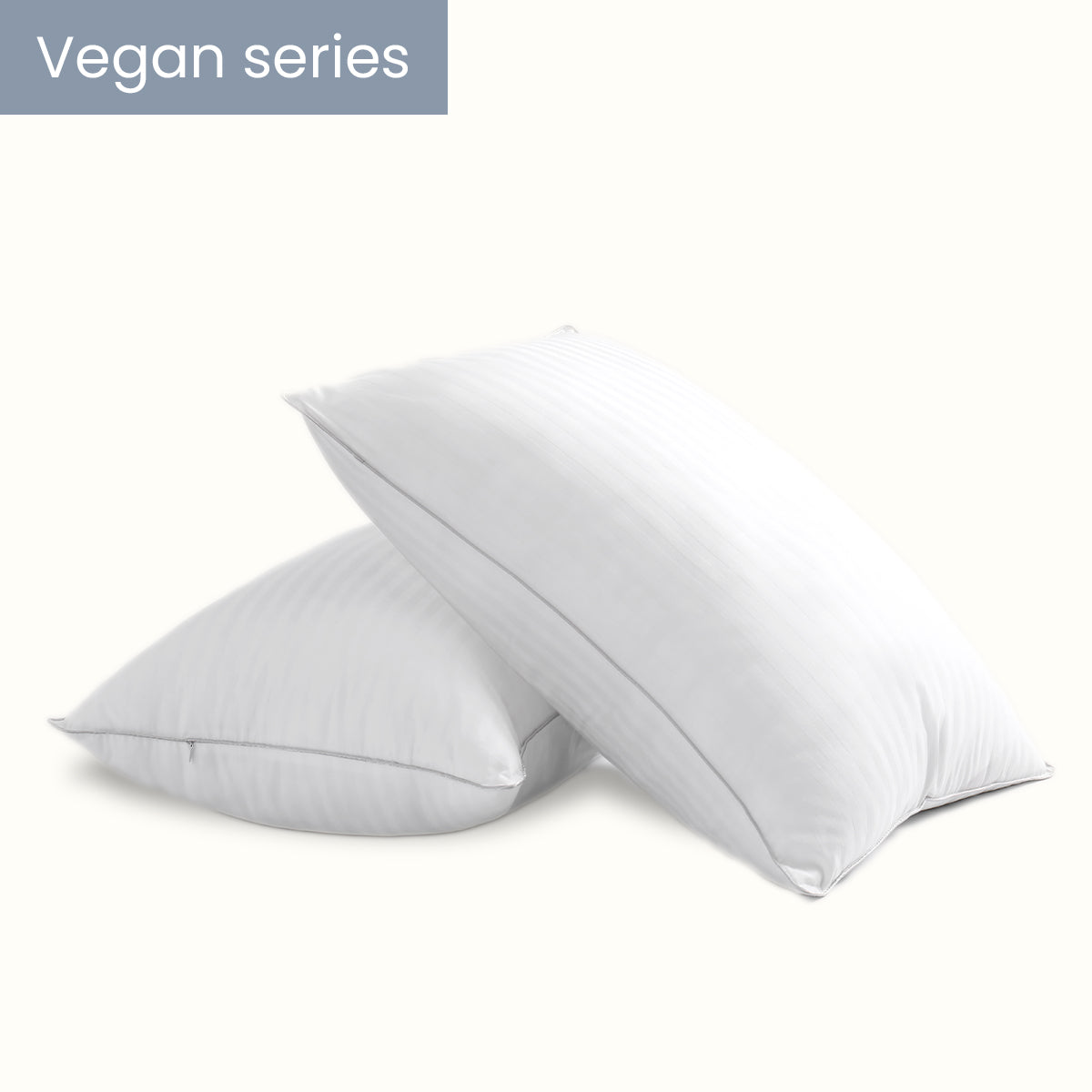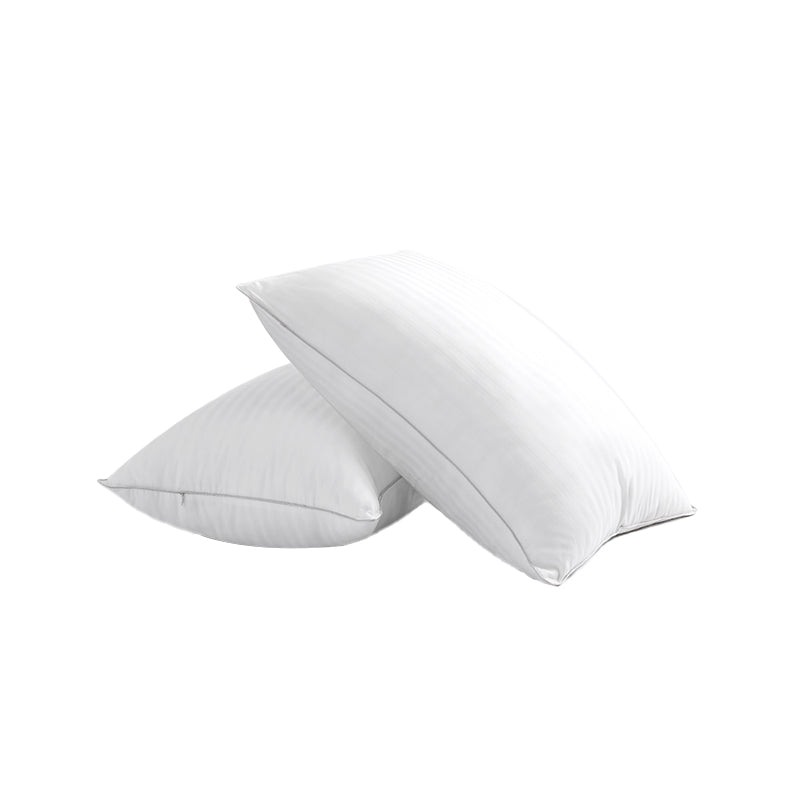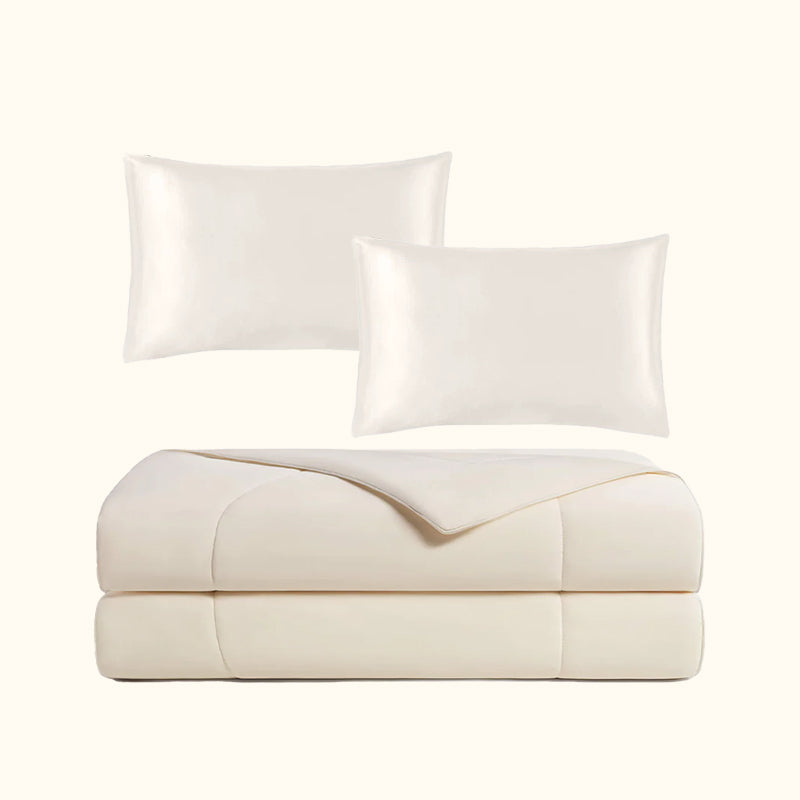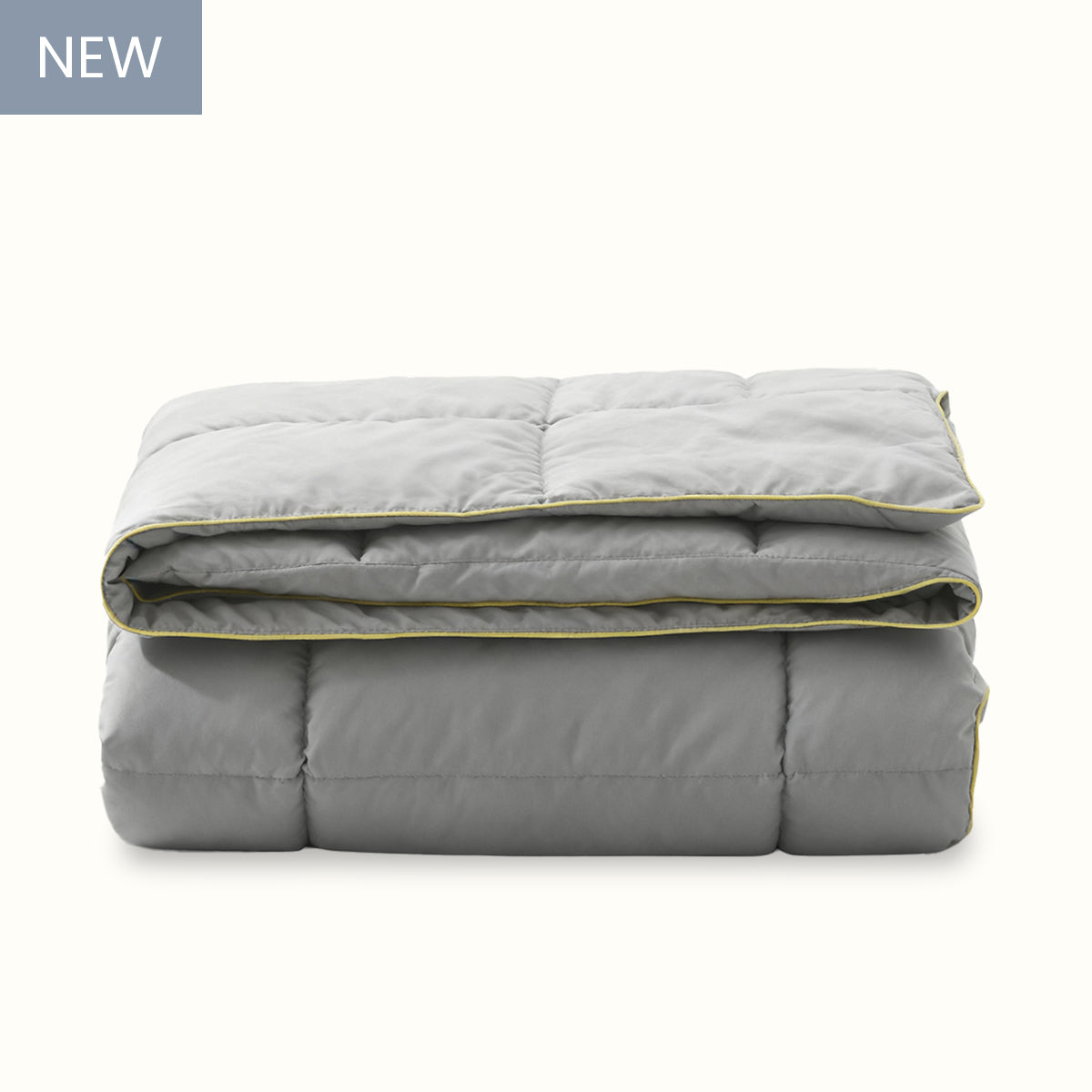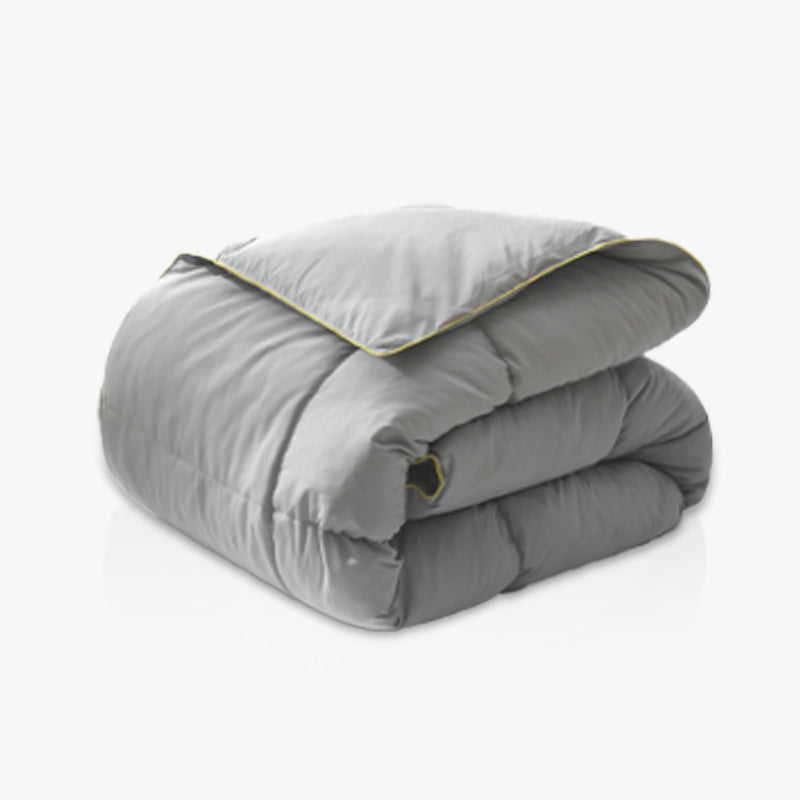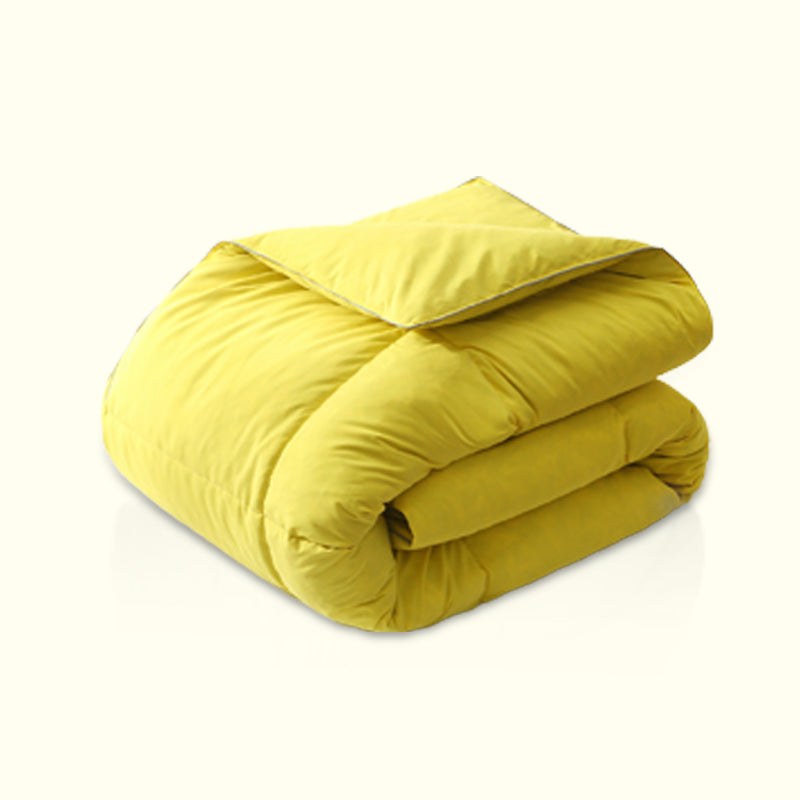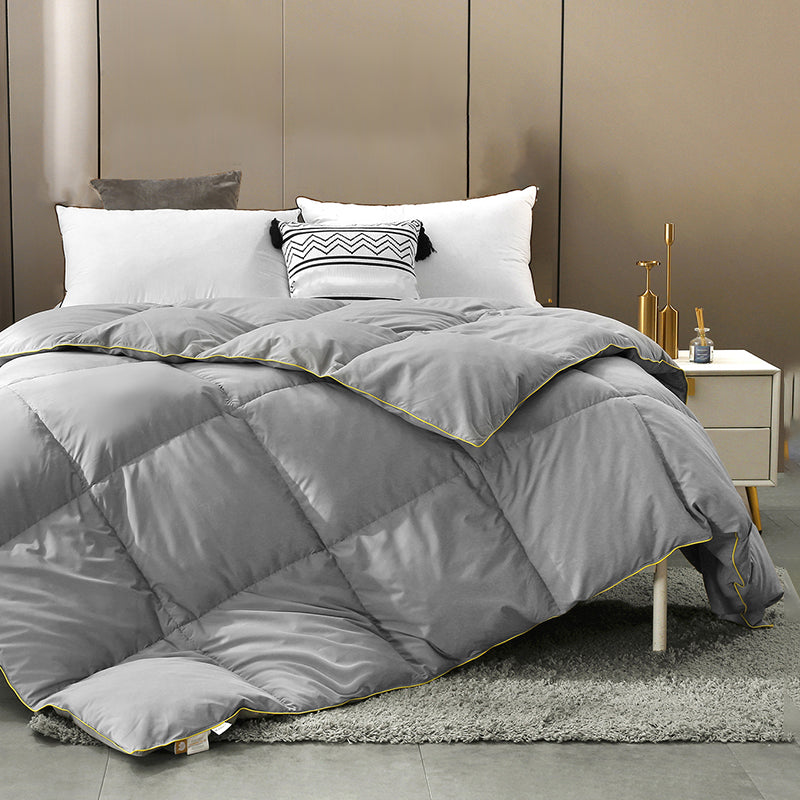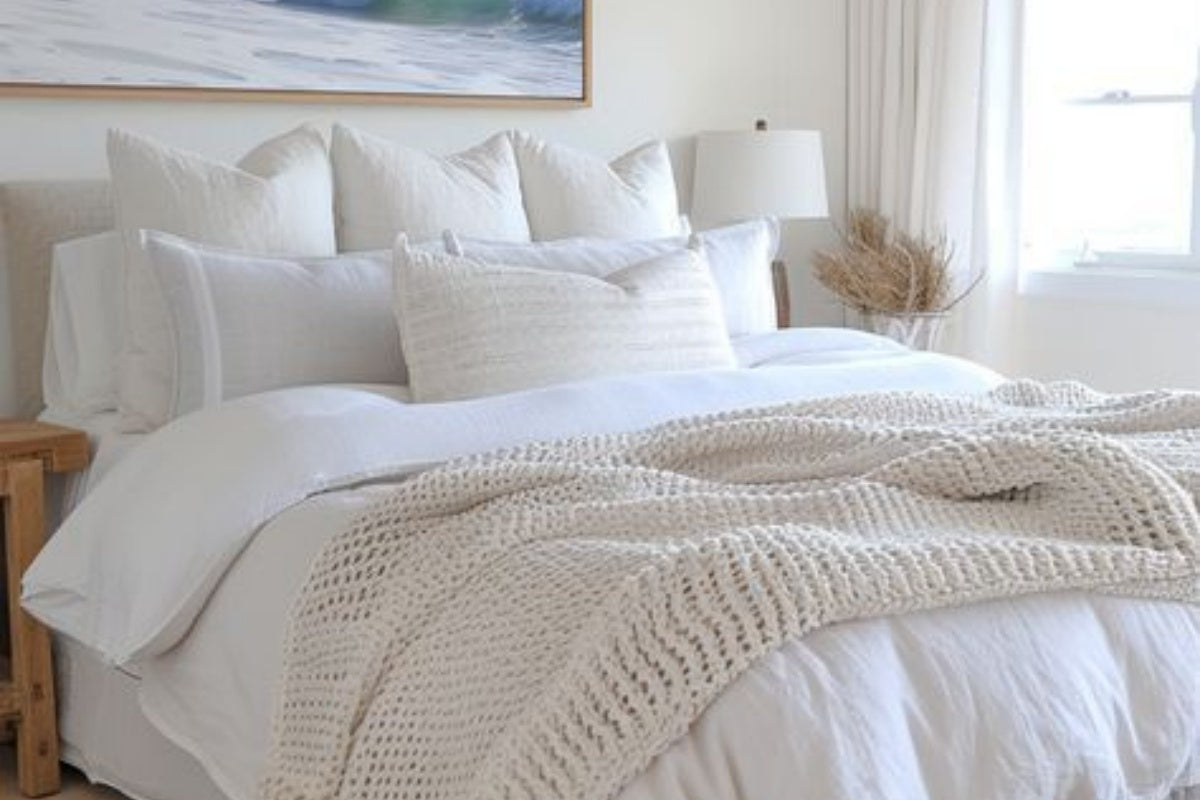Wie man Bettdecken richtig wäscht, hängt vom Füllmaterial (z. B. Daunen, Synthetik, Wolle) und den Pflegehinweisen ab – hier finden Sie jedoch eine Schritt-für-Schritt-Anleitung für gängige Einstellungen und bewährte Methoden, um Beschädigungen zu vermeiden (beachten Sie immer zuerst das Pflegeetikett, da dieses Vorrang hat!).

Schritt 1: Überprüfen Sie zuerst das Pflegeetikett.
Das ist nicht verhandelbar! Auf dem Etikett wird Folgendes angegeben:
- Nur waschbar oder chemisch zu reinigen : Bei manchen empfindlichen Füllmaterialien (wie z. B. echten Daunen oder Wolle) kann eine chemische Reinigung erforderlich sein, um Verklumpungen oder Einlaufen zu vermeiden.
- Wassertemperatur : Typischerweise „kalt“, „warm“ oder „kühl“ – heißes Wasser kann Fasern beschädigen oder Farben verblassen lassen.
- Zyklustyp : Sanft, zart oder normal.
- Trocknungshinweise : Im Wäschetrockner trocknen oder an der Luft trocknen lassen.

Schritt 2: Die richtige Waschmaschine und den richtigen Trockner auswählen
- Verwenden Sie eine Waschmaschine mit großem Fassungsvermögen : Eine Toplader-Waschmaschine mit Rührwerk (zentrale Säule) kann Bettdecken verdrehen und zerreißen – entscheiden Sie sich für eine Frontlader-Waschmaschine oder eine Toplader-Waschmaschine ohne Rührwerk (HE, hocheffizient).
- Nicht zu viel Wäsche waschen: Waschen Sie die Bettdecke separat (oder mit 1–2 kleinen, ähnlichen Teilen wie Kissenbezügen), damit Wasser und Waschmittel gut zirkulieren können. Zu viel Wäsche führt zu unvollständiger Reinigung und Verklumpungen.

Schritt 3: Waschmaschineneinstellungen nach Bettdeckentyp
Nachfolgend finden Sie die Standardeinstellungen für gängige Bettdeckenfüllungen (sofern das Pflegeetikett Maschinenwäsche zulässt):
|
Füllart der Bettdecke
|
Wassertemperatur
|
Waschgang
|
Waschmittelart
|
Wichtigste Anmerkungen
|
|
Synthetisch (Polyester, Mikrofaser)
|
Warm (32–40 °C) oder kalt
|
Normal oder Sanft
|
Mildes Flüssigwaschmittel (z. B. Woolite)
|
Am haltbarsten – vermeiden Sie Bleichmittel oder Weichspüler (können die Fasern umhüllen und die Flusenbildung reduzieren).
|
|
Kalt (60–80°F / 15–26°C)
|
Sanft oder zart
|
Daunenspezifisches Waschmittel (z. B. Nikwax Down Wash)
|
Herkömmliches Waschmittel hinterlässt Rückstände, die die Fasern schädigen. Verzichten Sie auf Weichspüler – er verstopft die Poren.
|
|
|
Wolle
|
Kalt (max. 80°F / 26°C)
|
Wolle oder Zart
|
Wollspezifisches Waschmittel (z. B. Eucalan)
|
Wolle läuft in warmem/heißem Wasser ein. Verwenden Sie niemals Bleichmittel oder Weichspüler.
|
|
Baumwolle (Füllung/Bezug aus reiner Baumwolle)
|
Warm (90–105°F / 32–40°C)
|
Normal
|
Mildes Flüssigwaschmittel
|
Baumwolle ist robust, aber vermeiden Sie heißes Wasser, um ein Einlaufen zu verhindern (besonders wenn die Bettdecke neu ist).
|

Schritt 4: Trocknungsanleitung (Wichtig für flauschige Wäsche)
- Bei niedriger Temperatur im Trockner trocknen : Hohe Temperaturen können Daunen versengen, Kunstfasern schmelzen oder Wolle/Baumwolle einlaufen lassen. Bei Daunendecken verhindert eine niedrige Temperatur das Verklumpen der Fasern.
- Geben Sie Trocknerbälle oder saubere Tennisbälle hinzu : 2–3 Trocknerbälle aus Wolle (oder Tennisbälle in Socken) helfen, Verklumpungen aufzulösen und die Flauschigkeit wiederherzustellen.
- In Zyklen trocknen und regelmäßig aufschütteln : Bettdecken benötigen 1–3 Stunden zum vollständigen Trocknen. Unterbrechen Sie den Trockner alle 30 Minuten, nehmen Sie die Bettdecke heraus und schütteln Sie sie auf, um die Füllung zu verteilen – so vermeiden Sie feuchte Stellen (die Schimmelbildung begünstigen).
- Bei Bedarf an der Luft trocknen lassen : Wenn auf dem Pflegeetikett „an der Luft trocknen“ angegeben ist, hängen Sie die Bettdecke im Freien an einer stabilen Leine auf (vermeiden Sie direkte Sonneneinstrahlung bei farbigen Bettdecken) oder legen Sie sie flach auf eine saubere, trockene Oberfläche (wenden Sie sie regelmäßig).

Schritt 5: Weitere Tipps zur Vermeidung von Schäden
- Flecken vorsichtig vorbehandeln : Flecken mit einer Mischung aus Feinwaschmittel und kaltem Wasser abtupfen (nicht reiben!). Scharfe Fleckenentferner auf Daunen oder Wolle vermeiden.
- Verzichten Sie auf Bleichmittel und Weichspüler : Bleichmittel lassen die Farben verblassen und schwächen die Fasern; Weichspüler umhüllt die Füllung (und reduziert so Wärme und Flauschigkeit).
- Saisonales Waschen : Bettdecken müssen nur 2-4 Mal im Jahr gewaschen werden (verwenden Sie einen Bettbezug, um die Häufigkeit zu reduzieren – waschen Sie stattdessen wöchentlich den Bezug!).

Wenn Ihre Bettdecke nur chemisch gereinigt werden darf (was bei hochwertigen Daunen- oder Wollmischungen üblich ist), bringen Sie sie zu einer seriösen Reinigung, die sich auf empfindliche Bettwaren spezialisiert hat – dort werden Lösungsmittel verwendet, die die Füllung schützen.

